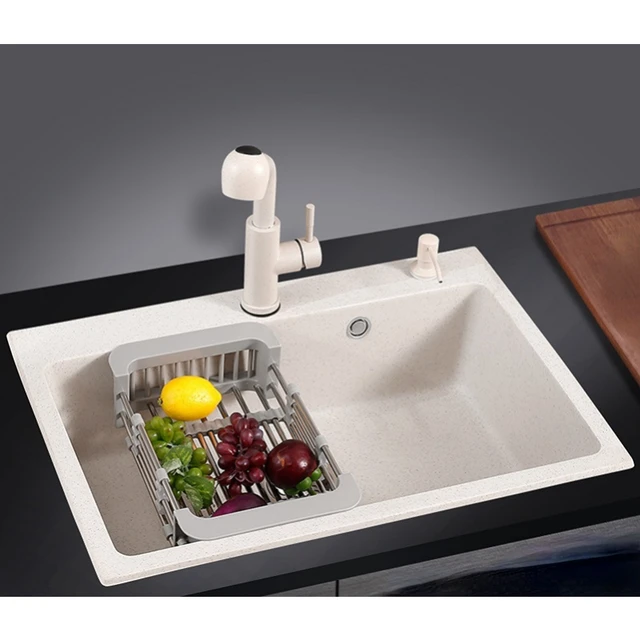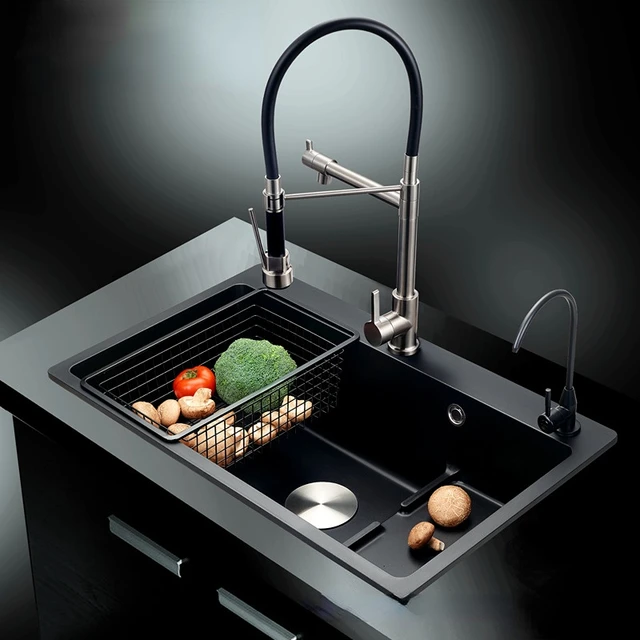 Introduction:
Introduction:
Stone kitchen sinks are gaining popularity for their durability, beauty, and natural elegance. Made from a variety of stone materials such as granite, marble, and soapstone, these sinks add a touch of luxury to any kitchen. In this comprehensive guide, we will explore the benefits, types, care and maintenance, and considerations for choosing stone kitchen sinks. By understanding these factors, you can make an informed decision and bring the timeless appeal of stone into your kitchen.
Benefits of Stone Kitchen Sinks
Durability and Strength:
Stone sinks are known for their durability and ability to withstand heavy use, impacts, and temperature fluctuations.
They are resistant to scratches, chips, and stains, making them ideal for high-traffic kitchens.
Natural Beauty:
Stone kitchen sinks offer a unique and natural aesthetic appeal, adding a touch of elegance and sophistication to any kitchen.
The varied colors, patterns, and textures of stone create a visually stunning focal point.
Heat and Chemical Resistance:
Stone sinks can withstand high temperatures, making them ideal for handling hot pots and pans without causing damage.
They are also resistant to chemicals and can withstand exposure to acidic substances commonly found in kitchens.
 A few drawbacks:
A few drawbacks:
While stone kitchen sinks offer numerous advantages, they also have a few drawbacks to consider:
Cost: Stone sinks tend to be more expensive than sinks made from other materials. The cost can vary depending on the type of stone used and the intricacy of the design. The initial investment for a stone sink may be higher compared to alternative options.
Weight: Stone sinks are typically heavier than sinks made from other materials, which can pose challenges during installation. The weight of the sink may require additional support or reinforcement when retrofitting it into an existing countertop or cabinet structure.
Porosity: Natural stone sinks can be porous, meaning they can absorb liquids and stains. If not properly sealed and maintained, water, oil, or acidic substances may penetrate the stone’s surface and cause discoloration or damage over time. Regular sealing is necessary to prevent staining and maintain the sink’s appearance.
Fragility: While stone sinks are durable, they are not invulnerable to chipping, cracking, or breakage. Heavy impact or dropping heavy objects into the sink can potentially cause damage. Proper care should be taken to avoid such incidents and ensure the sink’s longevity.
Maintenance: Stone sinks require ongoing maintenance to preserve their beauty. Regular cleaning, drying of the sink’s surface, and applying recommended stone sealers are necessary to prevent the buildup of debris, stains, or mold. Cleaning products that are too acidic or abrasive should be avoided to prevent potential damage to the stone.
Limited Design Options: Stone sinks may have limited design options compared to other materials. While natural stone offers distinctive patterns and textures, the available variety in terms of shape, style, and color may be narrower compared to synthetic or composite sinks.
Considering these drawbacks can assist in making an informed decision about whether a stone sink is the right choice for your kitchen, based on your budget, maintenance preferences, and desired aesthetic.
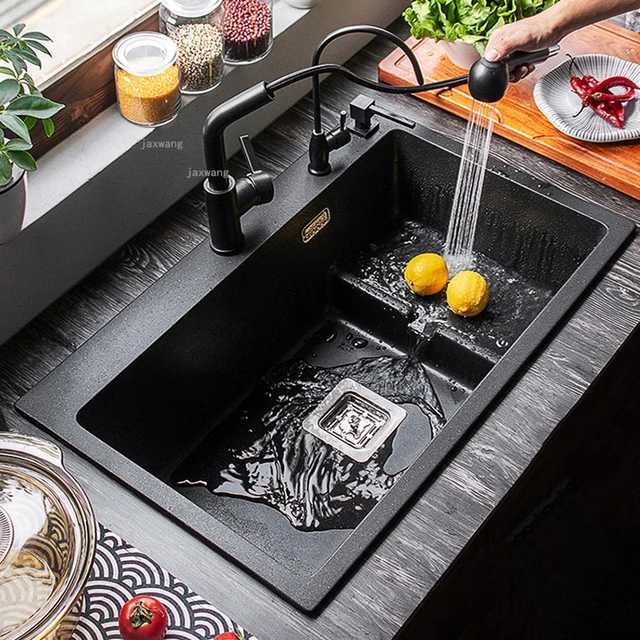 Types of Stone Kitchen Sinks
Types of Stone Kitchen Sinks
Granite Sinks:
Granite sinks are popular for their durability, resistance to heat, and unique veining patterns.
Available in a range of colors, granite sinks offer a luxurious and natural look.
Marble Sinks:
Marble sinks exude elegance and sophistication with their smooth surface, luxurious appearance, and veining patterns.
They require more care and maintenance due to marble’s porous nature.
Soapstone Sinks:
Soapstone sinks are known for their rustic charm and heat resistance, making them ideal for busy kitchens.
With their natural gray or green hues and unique veining, soapstone sinks add character to the kitchen.
Pairing stone kitchen sinks with faucets:
When it comes to pairing stone kitchen sinks with faucets, there are a few considerations to keep in mind:
Finish:
Consider the finish of the stone sink and select a faucet finish that complements it. Popular choices include brushed nickel, stainless steel, or oil-rubbed bronze. The goal is to create a cohesive and harmonious look between the sink and faucet.
Style:
Take the style of the stone sink into account when choosing a faucet. For example, if you have a farmhouse-style stone sink, a traditional or apron-front faucet with a curved spout can enhance the overall aesthetic. If you have a modern or minimalist stone sink, a sleek and angular faucet design may be more suitable.
Functionality:
Ensure that the chosen faucet style and design offer the necessary functionality for your kitchen needs. Consider factors such as the height of the faucet, the type of handles (lever or knob), and the spray options (pull-down or pull-out) that will best suit your daily tasks.
Proportions and Placement:
Consider the size and placement of your stone sink in relation to the faucet. A large, deep sink may require a higher-arched faucet that allows sufficient clearance for filling and washing larger items. Similarly, ensure that the faucet’s spout reaches comfortably into the sink bowl.
Maintenance and Care:
Keep in mind that stone sinks may require specific care and maintenance to preserve their appearance and functionality. Choose a faucet that is easy to clean and requires minimal upkeep to ensure the longevity of your kitchen fixtures.
Ultimately, the goal is to create a visually appealing and functional combination between the stone sink and faucet. Consider the sink’s style, finish, and maintenance needs when selecting a compatible faucet that enhances both the aesthetics and functionality of your kitchen.
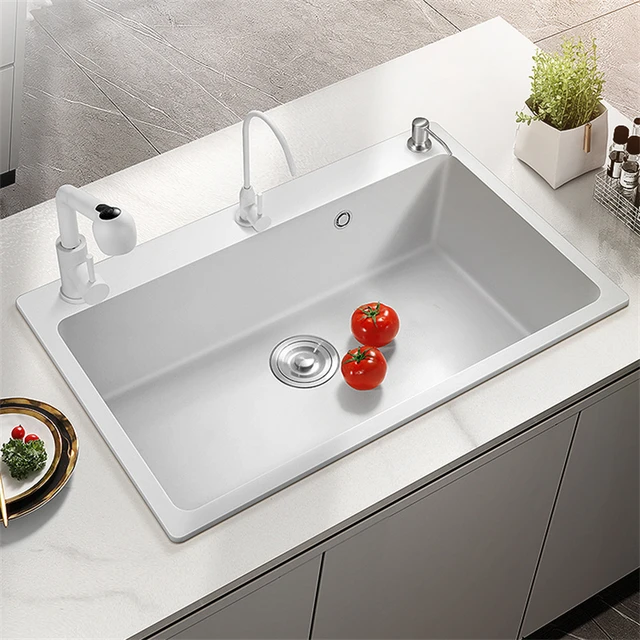 Care and Maintenance of Stone Kitchen Sinks
Care and Maintenance of Stone Kitchen Sinks
Daily Cleaning:
Clean stone sinks with mild dish soap and warm water on a daily basis.
Avoid abrasive cleaners, harsh chemicals, or scouring pads that can damage the stone surface.
Sealing and Resealing:
Stone sinks, especially porous materials like marble, may require periodic sealing to prevent staining.
Follow the manufacturer’s guidelines for sealing and resealing to maintain the sink’s appearance and protection.
Avoiding Direct Impact and Heat Exposure:
Take precautions to prevent dropping heavy objects onto the sink and damaging the stone.
Avoid placing hot pots and pans directly on the sink’s surface to prevent heat-related damage.
Considerations for Choosing Stone Kitchen Sinks
Size and Configuration:
Consider the size and configuration of your kitchen to determine the appropriate size and style of the stone sink.
Take into account the available countertop space and surrounding cabinetry when selecting a sink.
Budget:
Stone sinks can vary in price depending on the type of stone, size, and style chosen.
Consider your budget and prioritize the features you desire in a stone sink.
Compatibility with Kitchen Design:
Choose a stone sink that complements the overall design and style of your kitchen.
Consider factors such as color, pattern, and sink shape to ensure a harmonious visual appeal.
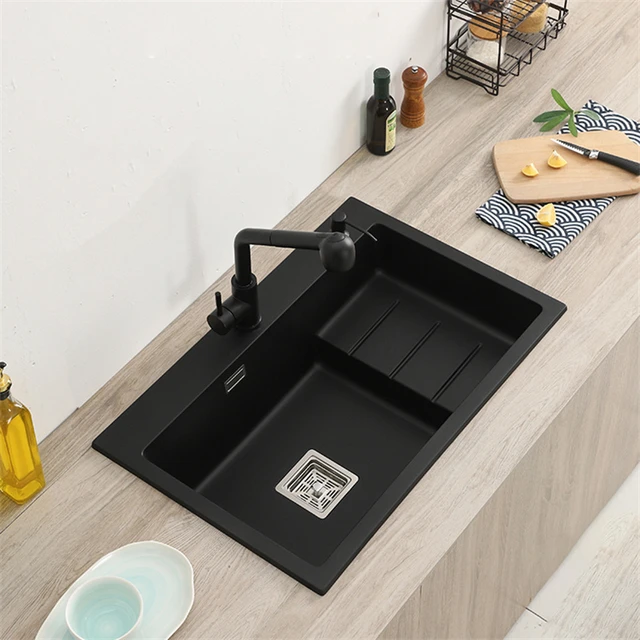 Conclusion:
Conclusion:
Stone kitchen sinks offer a unique blend of durability, natural beauty, and elegance that can elevate your kitchen’s aesthetic appeal. Available in various types such as granite, marble, and soapstone, these sinks add character and charm to any kitchen environment. With their heat resistance, durability, and resistance to scratches and stains, stone sinks provide a practical and visually appealing solution. Proper care and maintenance are essential to preserve their beauty and longevity. By considering factors such as sink size, budget, and compatibility with your kitchen design, you can choose the ideal stone sink that enhances the functionality and style of your kitchen for years to come.
